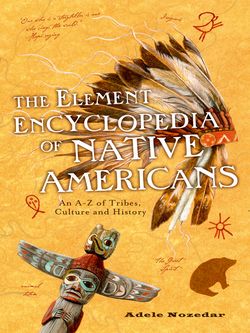Читать книгу The Element Encyclopedia of Native Americans: An A to Z of Tribes, Culture, and History - Adele Nozedar - Страница 97
CATAWBA
ОглавлениеAlso known as the Esaw or Issa, which name refers to the river running through their ancestral lands, the Catawba were at one time considered to be the most important tribe in the Carolinas. About 250 years ago there were estimated to be 5,000 tribal members in North and South Carolina. The tribe belong to the Siouxan language family.
Despite constant battles and skirmishes with other tribes in the area—including the Cherokee, the Delaware, and the Shawnee—the Catawba were, on the whole, well-disposed toward the very early European explorers and settlers. However, like many other tribes, the Catawba fell prey to the white man’s diseases—in particular, smallpox: in 1759 a severe epidemic obliterated almost half of the tribe, who had no immunity to the illness.
In 1763 the tribe were allocated a reservation of approximately 15 square miles which straddled both sides of the Catawba River. Fighting on behalf of the Americans against the British in the War of Independence, the tribe relocated to Virginia at the approach of the British troops, but returned afterwards and formed two villages on the reservation. In the early 19th century the tribe chose to lease their land to white settlers, and in 1840 they sold the entire reservation, all except for one square mile, and headed toward Cherokee country, where they found that the relationship with their old adversaries was as bad as it ever had been. Although there were instances of intermarriage between the two tribes, for the most part the Catawba returned to South Carolina.
The Catawba were an agricultural tribe and, in common with other Indian peoples who enjoyed a stable existence, were able to devote time to experimenting with basketware and pottery. Hunting and fishing supported their farming endeavors.
In terms of religion, the Catawba believed in a trinity of the Manitou (or creator), the Kaia (or turtle), and the Son of the Manitou. It’s possible that this idea of a trinity was influenced by the beliefs of the Christian faith of the white settlers. When the Mormons visited the tribe in the 1880s, several members of the Catawba converted, and some even relocated to Utah.
